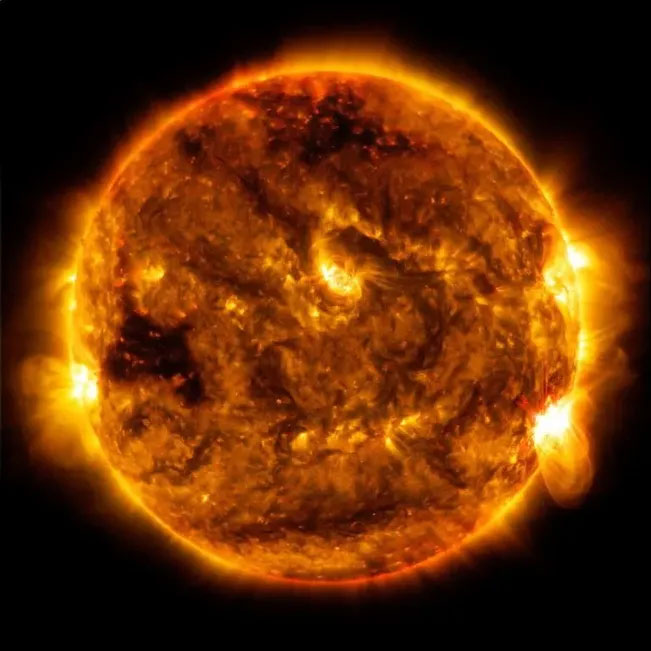In addition to providing heat and light, the Sun affects the space environment in various ways. To learn more about the Sun and how it impacts the space environment, NASA has recently announced two new space missions: the Multi-Slit Solar Explorer (MUSE) and HelioSwarm.
This bright sphere emits radiation along with charged particles that interact with Earth’s magnetic field in a complex phenomenon known as space weather. This can affect the health of astronauts traveling beyond the protective layer of Earth’s magnetosphere, as well as electronic devices such as satellites in high orbits.

NASA announces the Multi-Slit Solar Explorer (MUSE) and HelioSwarm missions.
“MUSE and HelioSwarm will provide new and deeper insights into the Sun’s atmosphere along with space weather. These missions will not only expand the science of solar physics but also offer a unique perspective to explore the mysteries surrounding this extremely hot sphere,” said Thomas Zurbuchen, NASA’s Science Administrator, in a statement.
MUSE is the name of a spacecraft orbiting Earth equipped with two Extreme Ultraviolet (EUV) instruments: an EUV spectrometer and an EUV imager. The mission of MUSE is to examine the Sun’s corona, how the corona is heated, and the energy bursts such as solar flares or coronal mass ejections that cause space weather.
Nicola Fox, Director of the Helicopter Division at NASA Headquarters, stated: “MUSE can help us fill critical knowledge gaps related to the relationship between the Sun and Earth, while also providing information for a range of subsequent solar physics missions.”
The second mission, HelioSwarm, consists of a cluster of nine spacecraft that will work together to measure changes in the Sun’s magnetic field and solar wind. These winds blow through the outer layer of the Sun’s atmosphere (the corona), extending out from the Sun and beyond the planets of the solar system.
“Technical advancements on the small satellites of HelioSwarm will optimize the investigation of turbulence and its evolution in solar wind,” said Peg Luce, Deputy Director of the Helicopter Division.
NASA has not yet announced the launch dates for either of these missions.


















































